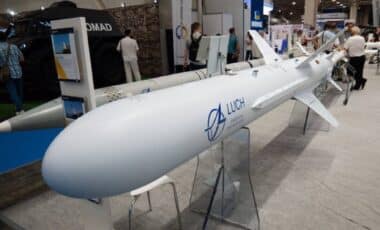Chinese researchers have recently announced a significant advancement in the field of explosives with the successful field test of a non-nuclear hydrogen bomb. This test has sparked discussions about the potential applications of this technology and its implications for global security.
According to reports from the South China Morning Post, the detonation produced an explosion lasting over two seconds—15 times longer than a typical TNT blast.
Germany’s $2.38 Billion Long-Range Weapons Set to Deploy in Weeks, Posing Major Threat to Russia
Explosion Details
The team detonated a 2-kilogram non-nuclear hydrogen bomb in a controlled environment, ensuring safety while allowing precise measurement of the explosion’s effects. The detonation produced a white fireball exceeding 1,000 degrees Celsius—enough to melt certain aluminum alloys.
Hydrogen explosions are characterized by their ability to ignite with minimal energy and propagate rapidly. Wang Xuefeng, who leads the team, explained that hydrogen gas “ignites with minimal energy, has a broad explosion range, and releases flames that spread quickly and widely.”
Consequences and Characteristics
The intense heat released by this explosion can cause significant thermal damage over large areas. The resulting flames spread quickly and broadly, enhancing the destructive potential of the blast. These types of explosions require very little energy to initiate and can impact multiple targets simultaneously due to their rapid expansion.
Potential Applications
While still in development, this technology is already drawing attention for its potential military use. It could be deployed to neutralize high-value targets due to its long-lasting and powerful explosive capacity. However, more research is needed to fully understand all possible applications.
How It Works and Production Challenges
Unlike traditional explosives, this bomb uses magnesium hydride, a solid that stores far more hydrogen than conventional pressurized tanks. When triggered by a conventional explosive, the material rapidly releases hydrogen gas. Upon mixing with air and igniting, it creates a powerful explosion.
Producing this hydride is complex and hazardous. The material is highly reactive—exposure to air can cause accidental explosions. Current production is limited to just a few grams per day under strictly controlled conditions.








